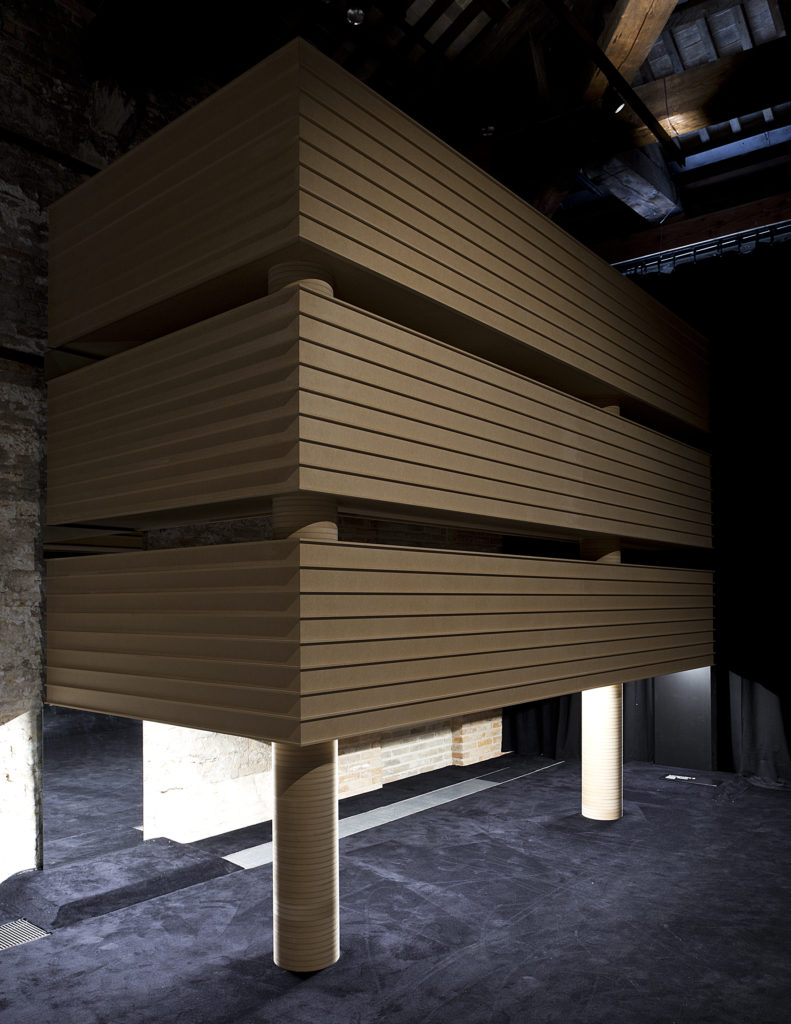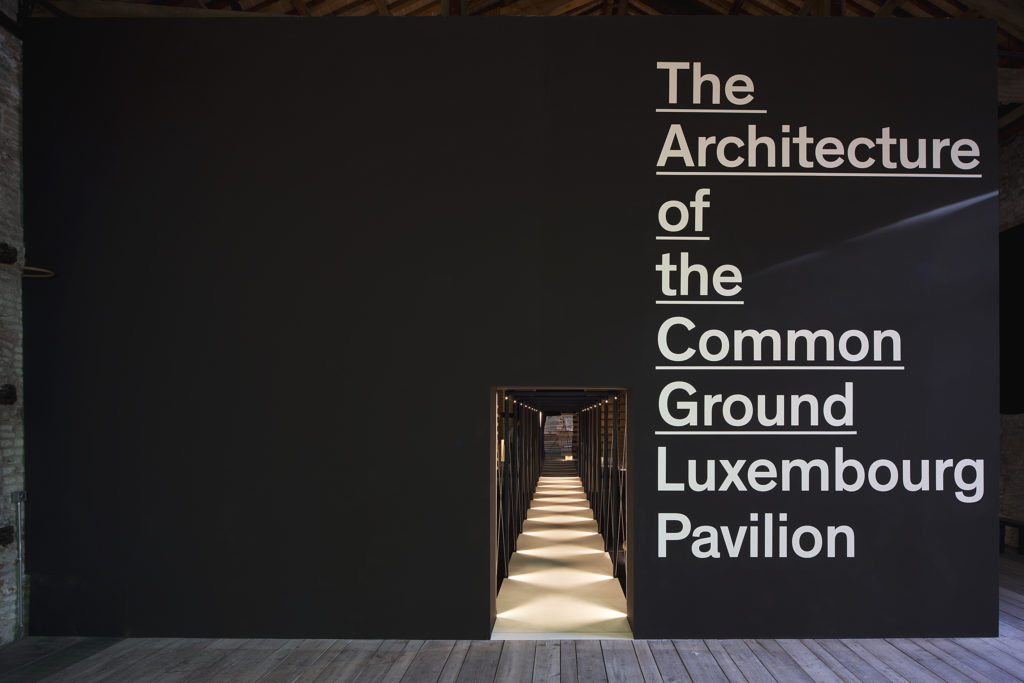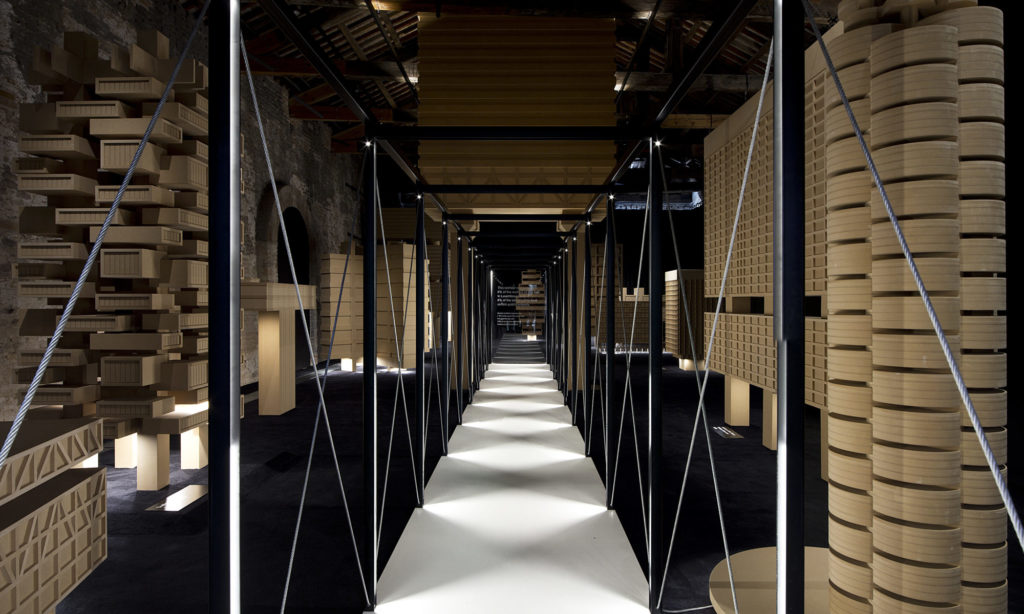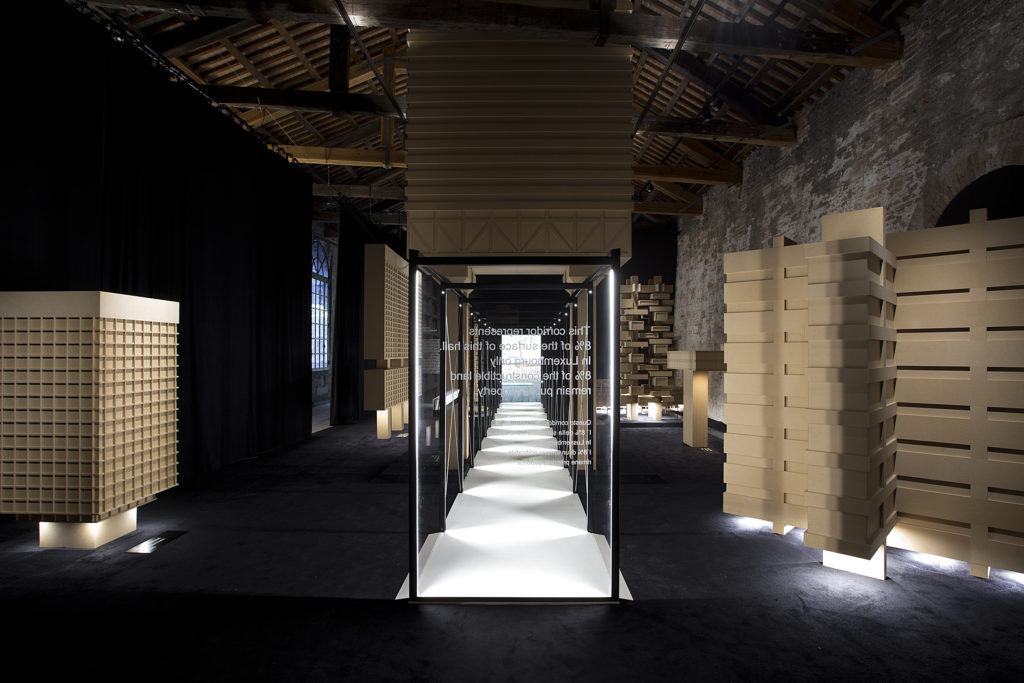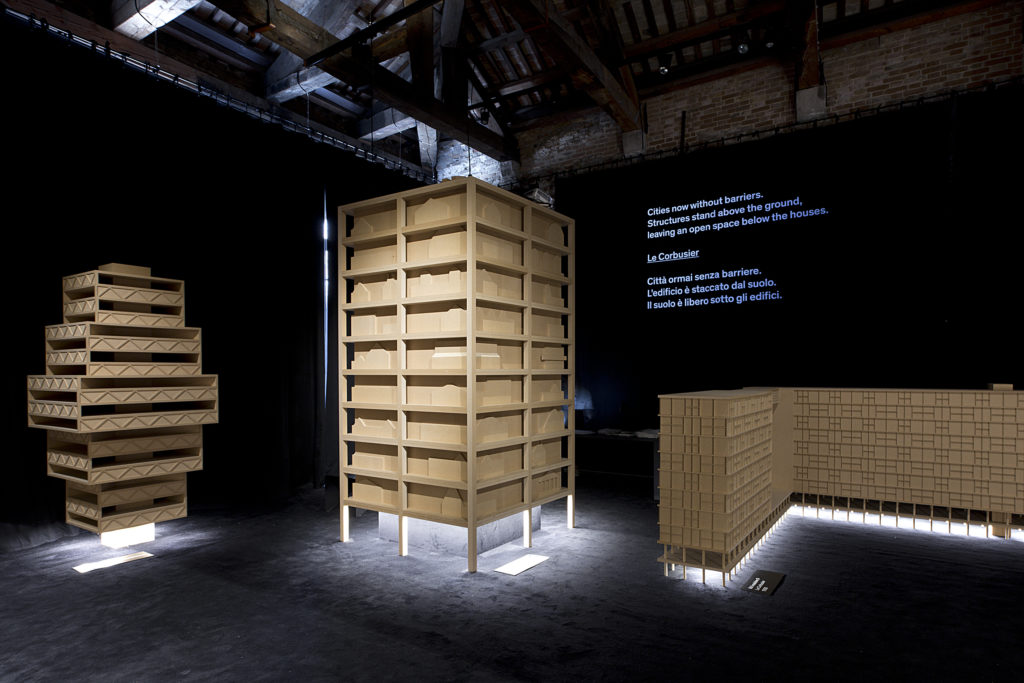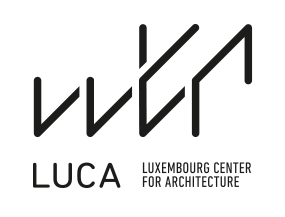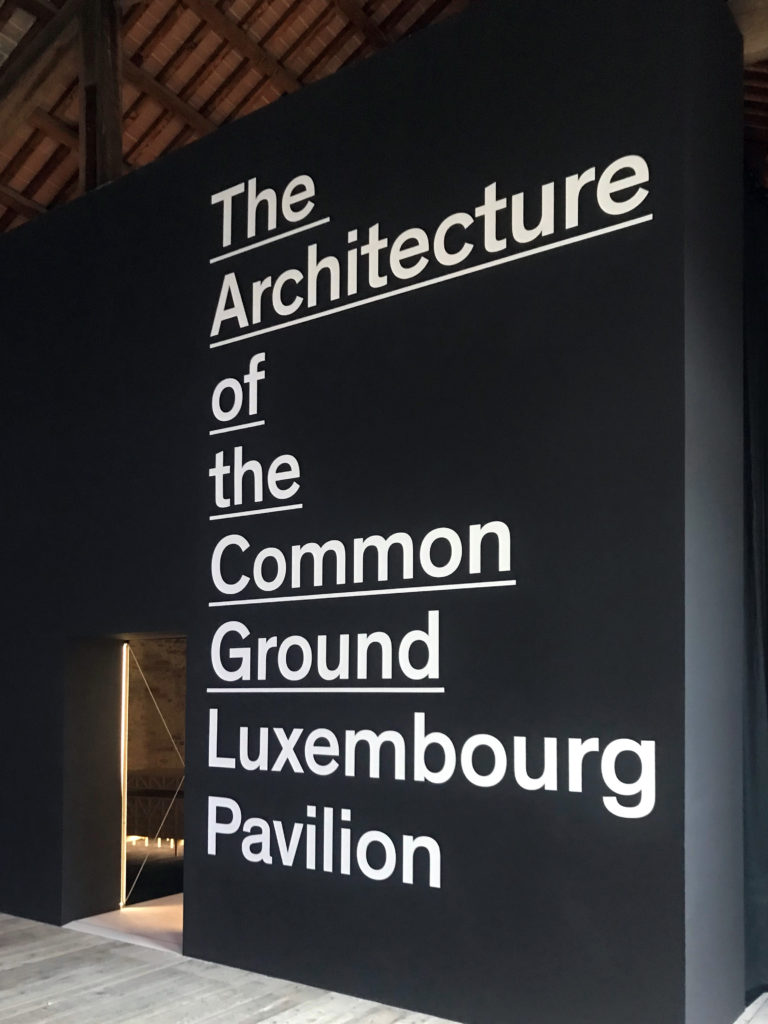
With its 8th contribution to the International Architecture Exhibition of La Biennale di Venezia, the Grand Duchy of Luxembourg moves from its former exhibition space at the Ca’ del Duca to Arsenale’s Sale d’Armi, the 20-year hospitality agreement underlining the country’s long-term commitment and the importance it attributes to culture, architecture and the built environment.
For its first exhibition at the Arsenale and unlike in previous years, the organiser LUCA Luxembourg Center for Architecture decided, in agreement with the commissioner, the Luxembourg Ministry of Culture, to not launch an open call for projects, but to rather take over the conception and production of the exhibition itself. In order to highlight the country’s competences in architectural research and the Baukultur, LUCA chose the Master in Architecture of the University of Luxembourg as its curating partner.
The exhibition of the Luxembourg Pavilion, . The Architecture of the Common Ground , pursues the idea of what room for manoeuvre will open up when architecture, in defiance of market logic, refocuses on its creative power and social ambition so as to give the public as much access as possible to the limited land resources and thereby to allow communal use of them. The curators make best use of the move of the pavilion into the new exhibition hall in the Arsenale to boost the wealth of ideas from recent architectural history in a unique and surprising overview and to develop its own first experimentations together with research units from the young Luxembourg University. Against the alarming backdrop that in the Grand Duchy of Luxembourg today 92% of constructible land that is in private hands, « The Architecture of the Common Ground’ puts forward a clear statement that does not mean to deliver universal answers but to show to what extent architects may conceptually react to the privatisation of land.
The way we deal with land has a decisive influence on architecture and urban planning. In the past decade, the privatisation of land and speculation with especially municipal land have risen dramatically. Many European cities that are, like Luxembourg, under high developmental pressure have practically no more of their own land available for construction. Although this problem is primarily a challenge for politics, many architects are also addressing it from a design point of view.
The Luxembourg Pavilion is engaging with the most radical of these approaches – elevated buildings that allow the land to remain open, both physically and symbolically. Various projects from the history of ideas enter into dialogue with contemporary experiments that share the aspiration of making the land accessible to public uses. In doing so, they are resisting an alleged logic that has led to an almost universal privatisation of land in cities, creating isolated enclaves and reducing the public sphere. « The Architecture of the Common Ground » is not a plea for a thoroughly elevated city, but an appeal to understand the finite and indispensable land as an inalienable common good, like air and water. Only then will we be in a position to further develop our cities in socially and environmentally sustainable ways.
